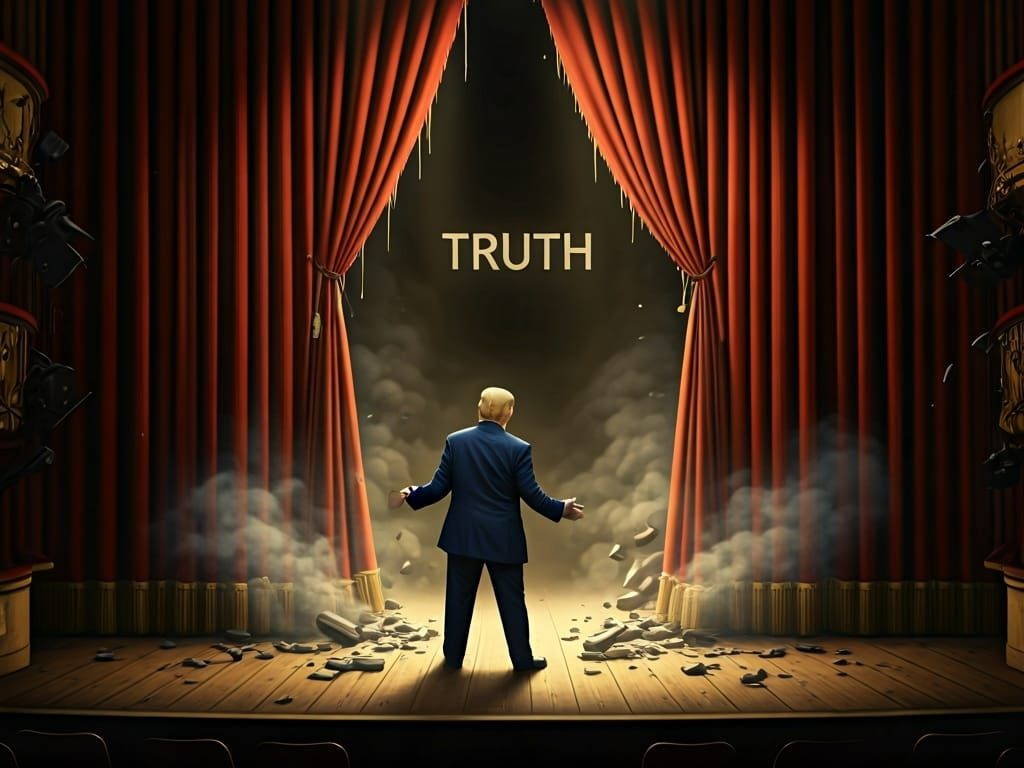Steelmanning the case, while noting that laughing at the circus doesn’t mean you want to live in the tent.
Trump the trickster: the joke that ran for president
Donald J. Trump, property mogul, reality TV star, political wrecking ball, is many things. But viewed through the mythic lens of the trickster, he becomes oddly legible. Like Anansi, Loki, or Hermes after too much Adderall, Trump doesn’t simply break rules, he points at them, mocks them, and sells merch off the wreckage. He is not the fool. He is the dealer of foolishness, and he’s made the world play.
Tricksters don’t succeed because they’re right. They succeed because they change the terms of the game. And Trump did just that, not by rising above the absurdity of American politics, but by embodying it so completely that the absurdity could no longer be ignored.
What tricksters do, and how Trump fits
Traditional tricksters have a few signature moves:
- They break taboos, not just to offend, but to test the limits of social order.
- They expose hypocrisy, by acting it out with such enthusiasm that it becomes unbearable.
- They weaponise laughter, undermining authority through ridicule, parody, and sheer audacity.
- They bend identity, shifting roles (god/fool, leader/buffoon) until categories collapse.
Now watch Trump:
- Breaks every taboo of political discourse, from insulting war heroes to mocking disabled journalists.
- Uses language not to clarify but to disorient, “I never said that”, “people are saying”, “I know more than the generals.”
- Turns political debate into WWE theatre, complete with nicknames, beefs, and spectacle.
- Performs sincerity and irony simultaneously, was he serious about bleach injections? Does it matter?
He is a figure who destroys semantic stability, which is exactly what the trickster does.
The trick he exposes
If every trickster reveals the lie at the heart of their society, what lies did Trump pull into the spotlight?
- That the grown-ups are in charge.
- That institutions are sacred.
- That “decorum” is the same as competence.
- That politics is a realm of reasoned discourse.
Trump didn’t invent the rot, he just made it look funny (while causing tremendous harm). He showed that media obsession trumps policy, that outrage generates clicks, and that fact-checking is powerless against performance. He turned the press into a laugh track and cable news into a feeding tube. His rallies were trickster rituals: call-and-response satire, red hats and snake oil, truth and untruth dancing in full view.
Where previous politicians maintained the illusion of unity and legitimacy, Trump exposed the theatre. He didn’t drain the swamp, he grabbed the camera and filmed a reality show inside it.
Trickster, but whose?
Unlike Hermes or Coyote, Trump’s trickster energy is not necessarily in service of the people. Traditional tricksters often restore balance by challenging hierarchy. Trump replicates hierarchy while pretending to subvert it. He mocks elites while being one. He bashes the system while gaming it. He’s the trickster in the palace, not on the road.
This is why he’s both compelling and dangerous. He offers the performance of resistance, not its reality. Like a meme that feels transgressive but sells T-shirts, his rebellion is always just enough to provoke, never enough to liberate.
Conclusion: a carnival mirror
Trump is not the trickster America wanted. But perhaps he is the one it deserved, a walking, tweeting funhouse mirror reflecting the culture back at itself: absurd, bombastic, obsessed with image, allergic to nuance.
And in that sense, he’s done what tricksters have always done:
- He’s made it impossible to keep pretending.
- He’s turned the system inside out and revealed its laughable entrails.
- He’s made the lie so big, so loud, so orange, that we finally had to see it.
The joke isn’t just on us, it is us. And sadly, it is costing a lot of lives.
